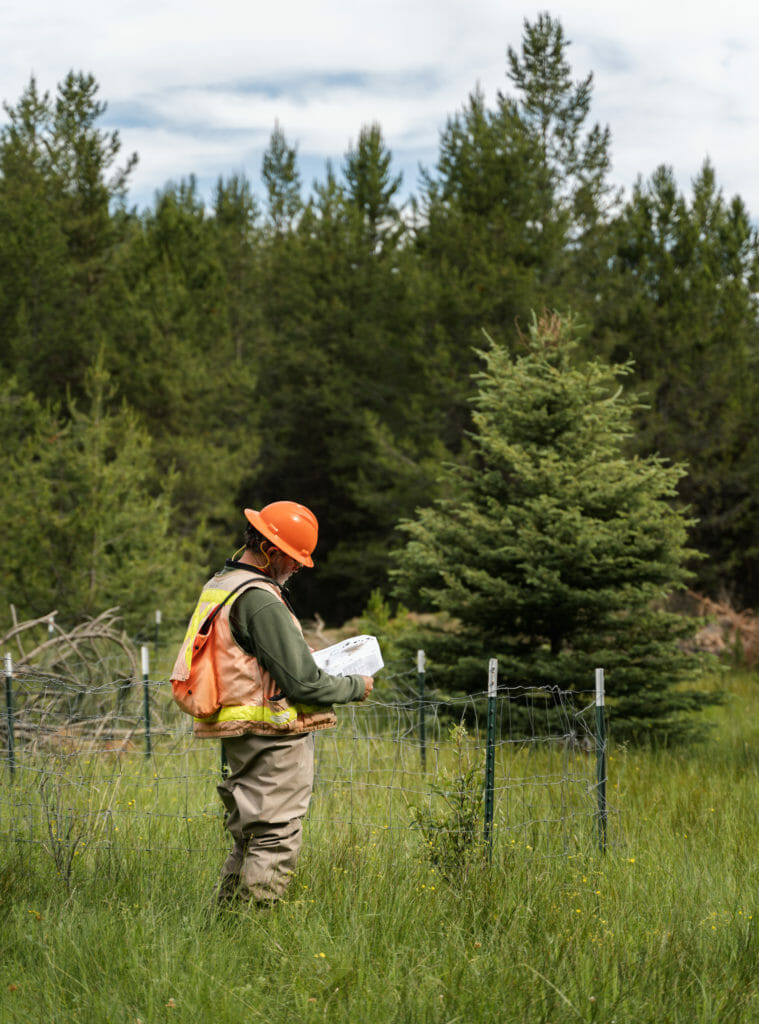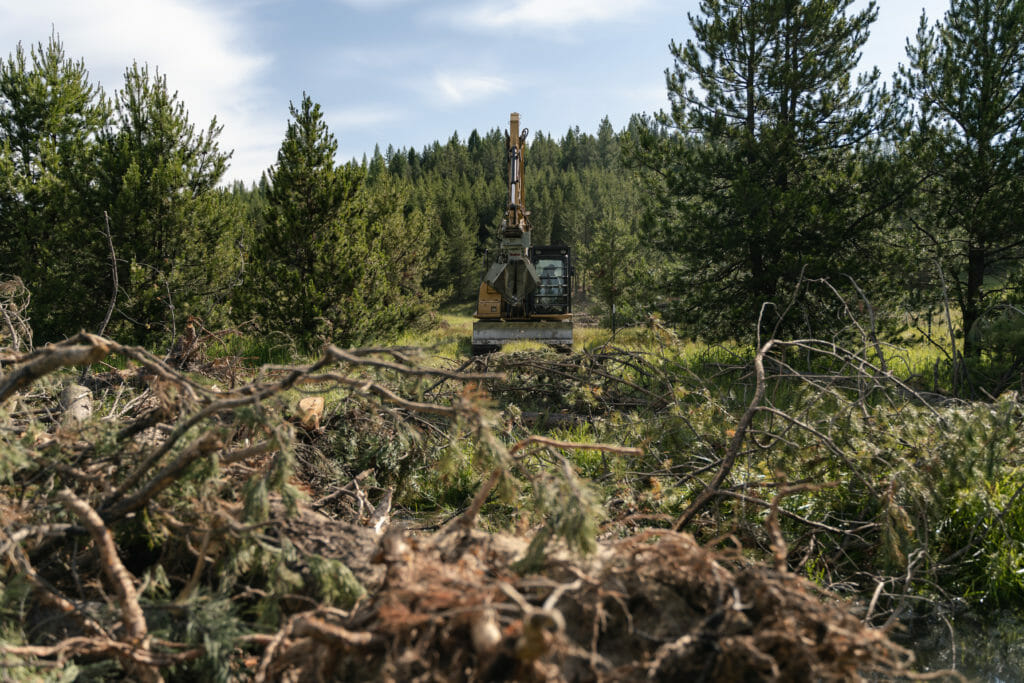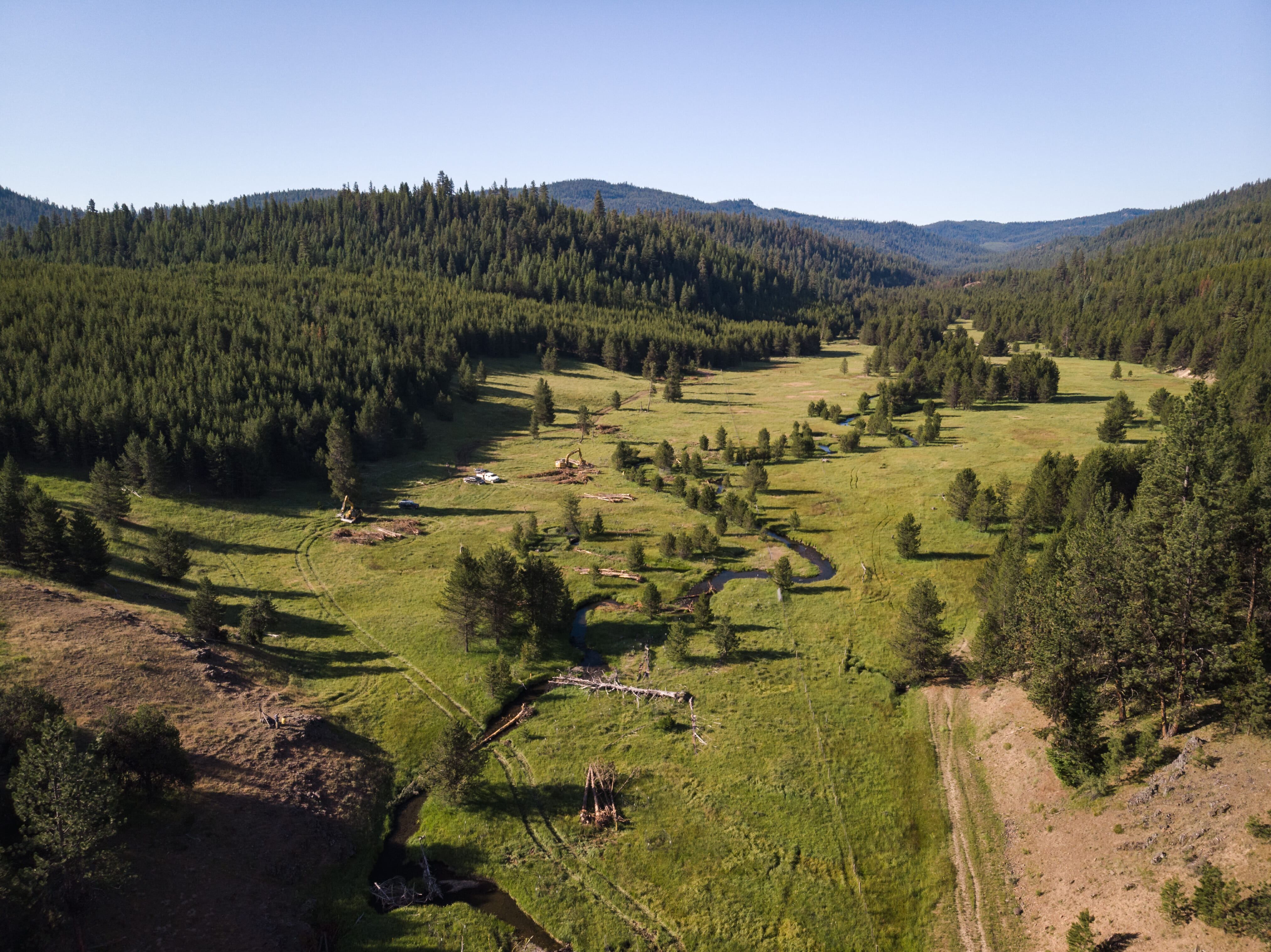Editor’s note: The TU Costa 5 Rivers Program sent a handful of college students to the Columbia River basin to study the challenges facing the drainage’s fisheries.
At 6 a.m. we started driving from La Grande, Oregon to the Grande Ronde River headwaters – Wallowa-Whitman National Forest. Within 20 minutes, the car’s temperature read 40 degrees and we were ecstatic after spending the prior day in 90+ degree weather.
We made the final turn onto a dusty gravel road, and were halted by grazing cattle. After watching them cross, and a few more turns, a black bear cub sprinted in front of us and into the trees. It was clear we were in a special place.
After an hour, we arrived at Sheep Creek and immediately met Levi Old, Northeast Oregon Project Manager for Trout Unlimited. He is working on the Sheep Creek Stream and Floodplain Restoration Project. The project planning lasted two years and it happened to be day-one of on-the-ground implementation.

Sheep Creek
Sheep Creek is a tributary to the Grande Ronde River, which flows into the mighty Snake River. At the project site, the river spans anywhere from about 5 to 15 feet, and is over two feet deep in a few spots. Sheep is home to numerous native fish species including pacific lamprey, steelhead and chinook salmon. We spotted a few lamprey redds on the first day of the job, and stayed clear of them. The creek acts as a cold-water refuge for these species as summer temperatures rise.
The Project
Over the next month, the contractors, staff of the Forest Service (FS) and Bureau of Land Management (BLM), Levi, and other volunteers will place over 180 large wood structures and 80 whole trees into the creek. The project implementation team is large and multi-faceted. The team includes heavy machine operators, numerous volunteers and youth, and a U.S. Veterans-based hand crew. This mixed approach brings a strong community engagement component to the effort, and diversifies the restoration techniques in the 4.5-mile section of creek.

The project’s restoration treatment includes seven different types of large wood structures. The most common are channel spanning and lateral forcing structures. These structures create pools, increase habitat complexity, and facilitate groundwater exchange and floodplain connectivity. By pushing water into the floodplain and in turn, the groundwater, cold water will slowly release into creek later into the warm months. This will keep the creek cooler and the flow higher in the late summer.
Passion
At the different project sites we’ve visited, we’re able to see how passionate the people involved with them are. Individuals like Levi, USFS staff, and BLM staff spent countless hours trying to get to the point where it all comes to life, and it’s pretty remarkable to witness and share their story.


